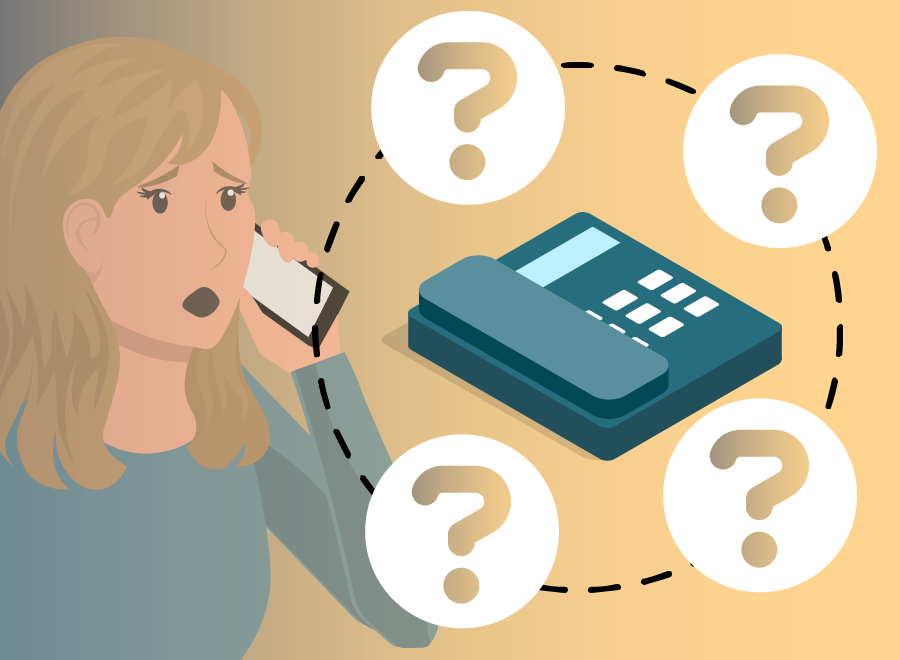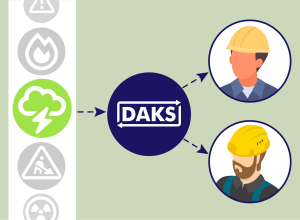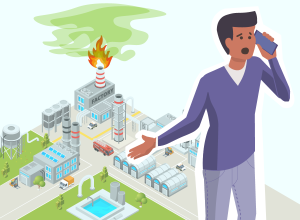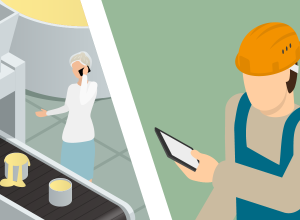© tetronik GmbH. All rights reserved.
© tetronik GmbH. All rights reserved.
Organize Many Inquiries with a Fault Hotline
A hotline that helps you keep a cool head
Extreme weather conditions, construction work or overloads repeatedly cause interruptions in the supply of electricity, gas, water or district heating, despite the best precautions. When the power suddenly goes out, the water stops coming out of the tap or the heating doesn't work, customers are unsettled and reach for the phone. Utilities typically have a 24/7 fault-clearing service set up for such cases, but major incidents generate a flood of calls that is almost impossible for employees to handle. In addition, they block lines that need to be kept free for urgent notifications, such as residents noticing the smell of gas.
Setting up an emergency hotline with the DAKS alarmserver is an extremely important measure for network operators and municipal utilities in order to process fault reports as quickly as possible, meet the callers' need for information and keep telephone lines free for important reports.

This is how you provide up-to-date information for citizens in affected neighborhoods

Major incidents cause stress in telephone switchboards
The employees in the telephone switchboards of the Greenhill municipal utility receive notifications of defective street lighting as well as reports of the smell of gas via their 24-hour fault-clearing service. They quickly initiate the appropriate measures, inform the responsible persons and coordinate on-call services. But in the event of major incidents, such as long-term power outages that cripple entire city areas, the telephone lines quickly become overloaded. This puts additional pressure on the employees who try to answer all inquiries.

This is how many calls are filtered intelligently
The DAKS alarm server forwards calls to the fault service in a prefiltered and organized manner. It does so either by means of predefined filter rules or by allowing callers to use specific keys to select the appropriate department for their concern – for example, for electricity, water or gas. In this way, calls from prioritized units, such as the fire department or key customers, can also be routed directly to the appropriate contact person.

Automated announcements provide the appropriate information
In the case of known faults, callers receive the appropriate information via a recorded announcement. This informs them where the fault occurred and whether someone is already on site to carry out repairs. Depending on the status, employees in the switchboards can update the announcements. This keeps callers up to date and makes it easier for them to estimate when the fault is likely to be resolved.

DAKS takes care of routine questions and keeps lines free
These automated announcements relieve the call center by sorting out many identical inquiries and speed up processing considerably. At the same time, the lines are kept free for important messages. Callers who want to know more or who want to report a new fault are immediately connected to an appropriate employee by the system. Urgent matters, such as the smell of gas, and internal calls from colleagues are prioritized and put through directly to the person responsible in the control center or in the field.
Advantages of setting up a fault hotline with DAKS

Relieving the burden on employees & retrenching personnel
- DAKS helps manage even considerable numbers of calls.
- DAKS automates the organization and filtering of all incoming calls to the hotline.
- Recurring processes are simplified and processing is accelerated.
- Faults can be rectified more quickly and efficiently.
- The lines of public utilities, power companies and other critical infrastructure are kept clear for emergencies.

Better service for citizens
- Stressful situations are more easily avoided and customer friendliness is increased.
- Citizens get the information they need faster and easier in crisis situations.
- Irritation or uncertainty of citizens due to long waiting times is reduced effectively.
- The fault hotline contributes to the accessibility of information – for citizens of all ages.
Discuss your individual
application project with us
Add this solution
to your shortlist
Related Application Examples

Conveniently Organize On-Call Services and Quickly Resolve Faults

Always Provide Up-to-Date Information with Citizen Helpline

Reduce Outages with an Internal Service Hotline
- Home
- Applications
- Utilities Industry
- Organize Many Inquiries with a Fault Hotline
© tetronik GmbH. All rights reserved.





